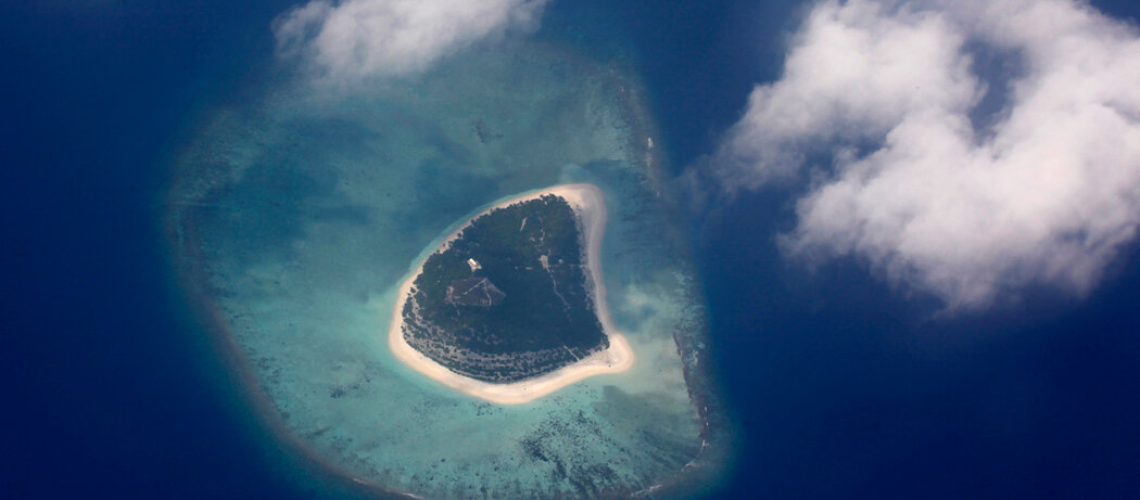Weaning the developing world off fossil fuels is critically important to prevent the climate crisis from becoming a catastrophe. But a major sticking point is making that goal hard to accomplish.
Many developing countries lack access to the cheap financing they need to make the switch to clean power, so they continue to burn fossil fuels, even though this is more expensive over the long term and hurts efforts to slow rising temperatures.
In a report last April, the World Bank framed the problem this way: Low- and middle-income countries “are caught in a poverty trap; they are unable to afford the high upfront costs of switching to clean energy, and thus are locked into higher costs and recurring payments for fossil fuels.”
Perhaps no place better encapsulates this energy paradox than my country, the Maldives, a nation of nearly 1,200 islands in the Indian Ocean and a little more than a half-million people scattered across 187 of those islands. For electricity, we rely almost completely on imported diesel fuel to run our generators. It’s dirty, expensive, volatile in price and a huge drain on our foreign currency reserves and budget.
But recent solar and battery storage projects, financed with the help of the World Bank, offered a path around those high capital costs so we could deploy renewable energy projects across our archipelago. They provide a template for other nations struggling with the same financing dilemma.
The Maldives is a new and fragile democracy. Its first multiparty elections were held in 2008. Since then, the country has experienced political upheaval, a period of authoritarian retrenchment, and more recently, a return to democracy and calm under the leadership of President Ibrahim Mohamed Solih.
The Maldives would like to rapidly deploy renewable energy, primarily solar, given our abundant sunshine. In 2020, President Solih set a goal for the Maldives to become net-zero by 2030 — one of the world’s most aggressive mitigation targets.
Not surprisingly, producing a unit of electricity with solar power on a sunny day is vastly cheaper than producing a unit of electricity using diesel. Especially on the more remote islands, switching from diesel generators to solar power promises fantastic cost savings, a boon to both residents and the government, which subsidizes electricity.
But we have been held back by the exorbitant cost of financing renewable projects. Our large debt and recent political instability, coupled with the hangover from the pandemic, have hurt the Maldives’ credit rating. The loans available to us can therefore carry elevated interest rates. This sky-high cost of capital makes most solar projects non-starters. So we continue to burn diesel fuel.
In this respect, the Maldives is not an outlier. Many developing countries are saddled with heavy debt, making them shaky places to invest, which increases risk premiums on financing and raises the cost of clean energy projects. Noting this problem, the heads of both the International Monetary Fund and the World Bank recently called for debt relief for developing countries, specifically to help them move to clean energy faster.
We also need more development banks to underwrite the risk of renewable energy projects in order to attract private investors. Help from these banks, which support private investment in developing countries, would lower the cost of capital significantly, making renewable energy projects viable.
A recent solar power project in the Maldives demonstrates the promise of that approach. After the World Bank offered to underwrite the risks of default, changes in currency exchange rates and contract termination, the cost of the project fell to 9.8 cents per kilowatt-hour, from 15 cents. This is the third and largest project we have done with the World Bank, and we see it as a breakthrough. Sixty-three investors expressed interest, and the cost is one of the lowest for any small island developing state, according to the bank.
Taking advantage of that World Bank guarantee, and the private investments that followed, the Maldives is rolling out solar projects from the capital city, Malé, to far-flung island communities. Short on land, the country is even pioneering the use of floating banks of solar panels in lagoons.
The investors that are financing and installing the solar systems will sell the electricity to the grid at an agreed-upon rate. In all, this should power the equivalent of 13,000 households and save $20 million a year spent on diesel fuel. Ours is not the only nation that has done this, and other countries are taking note, including other small island developing states.
But first we need a significant increase in this kind of financing in developing countries, with the risks underwritten. These arrangements don’t break the bank, so to speak, because they are merely a form of insurance. But they can unlock the vast amounts of private investment needed to create a boom in clean energy projects in developing nations.
The International Energy Agency estimates the world must triple renewable energy capacity by the end of the decade to hold the increase in global warming to 2.7 degrees Fahrenheit, or 1.5 degrees Celsius. Expanding renewable energy at that pace and scale would eliminate the equivalent of all of the current carbon dioxide emissions from China’s power sector, according to the agency.
To meet that goal, we must reduce the cost of capital in developing economies. If we do, we might just keep that climate target within reach.
Shauna Aminath is the minister for the environment, climate change and technology for the Maldives.



